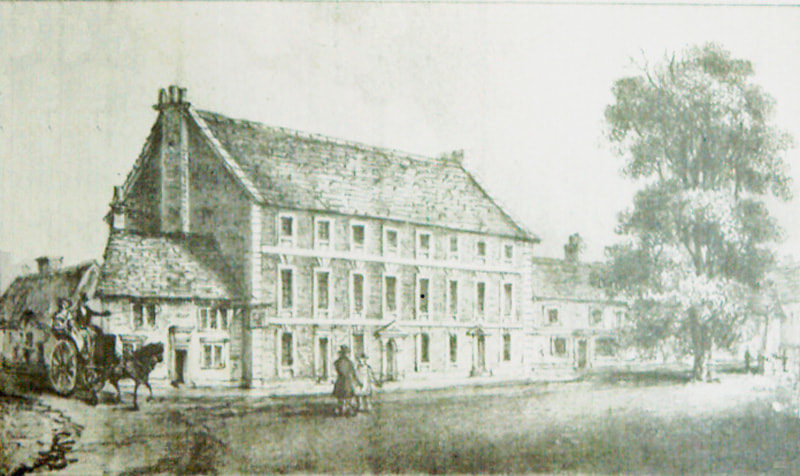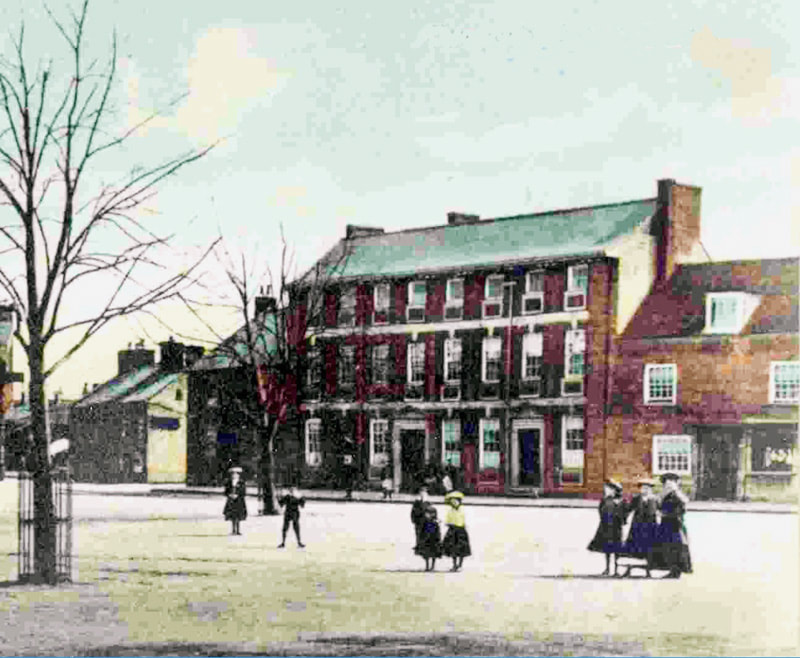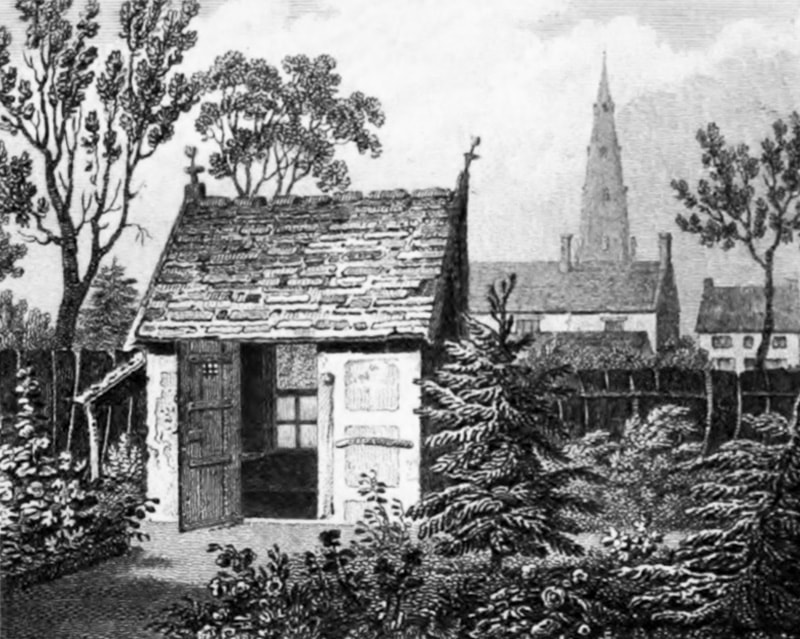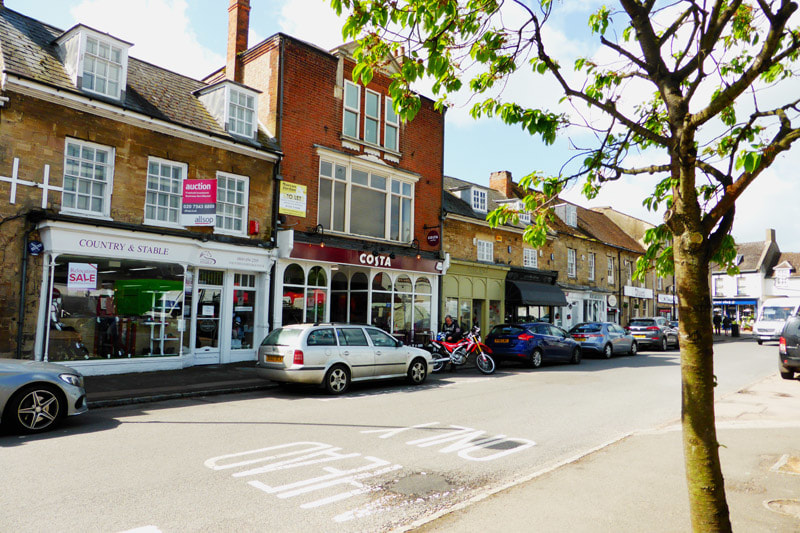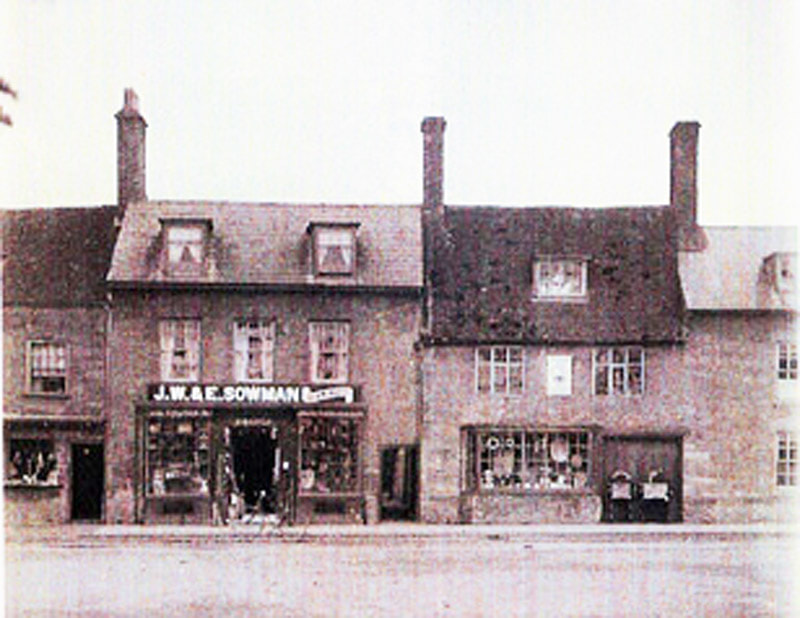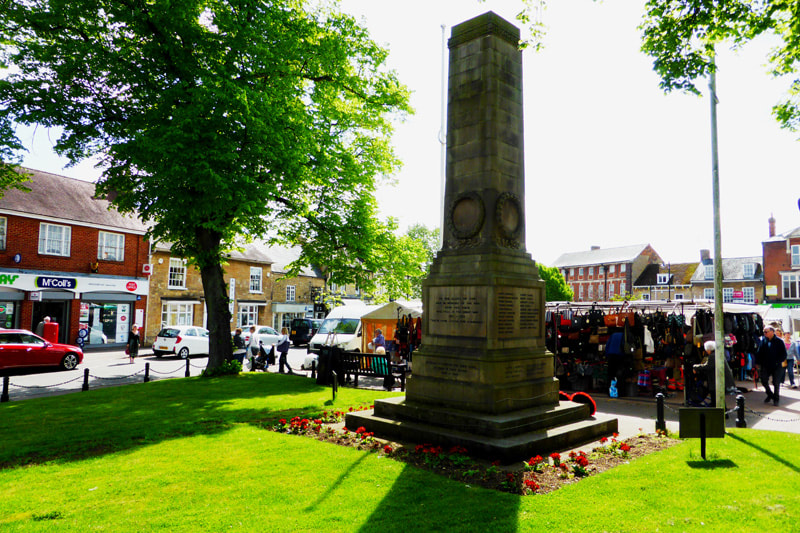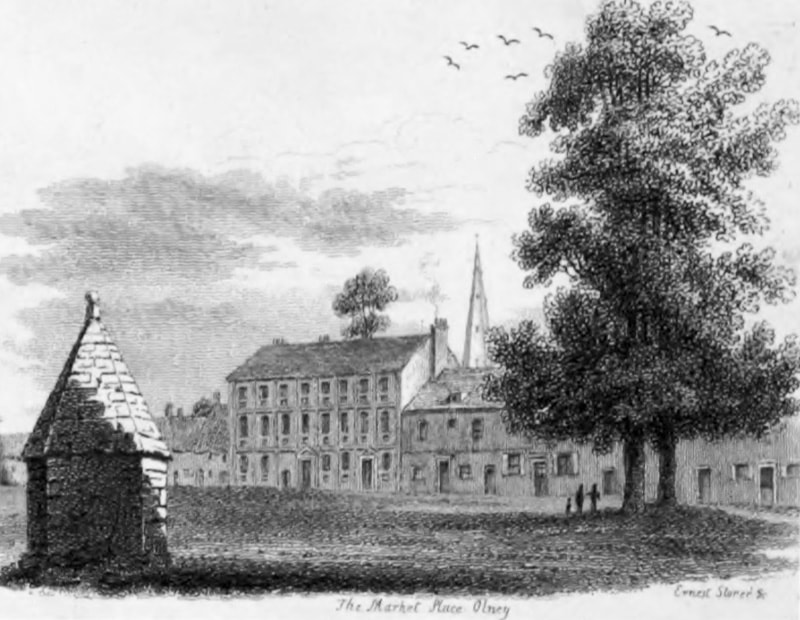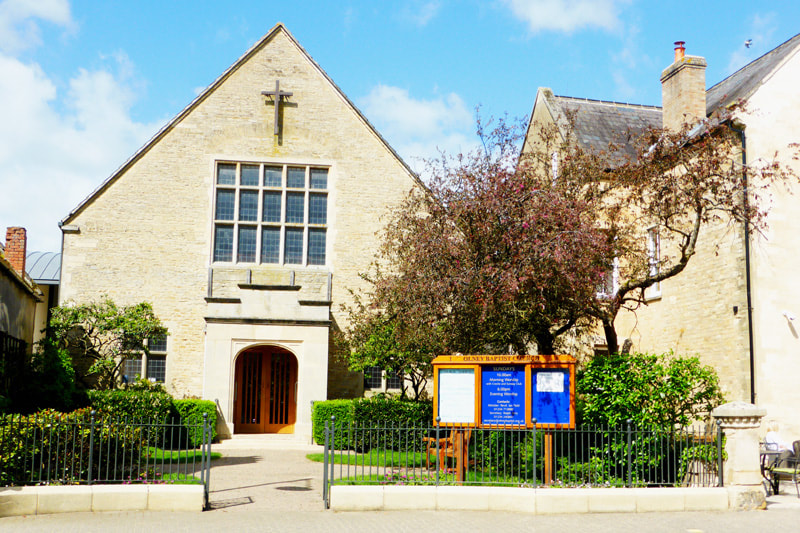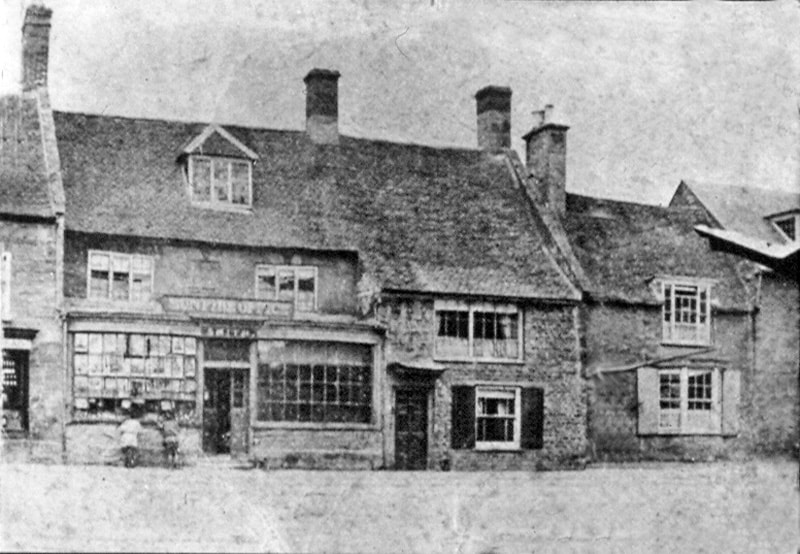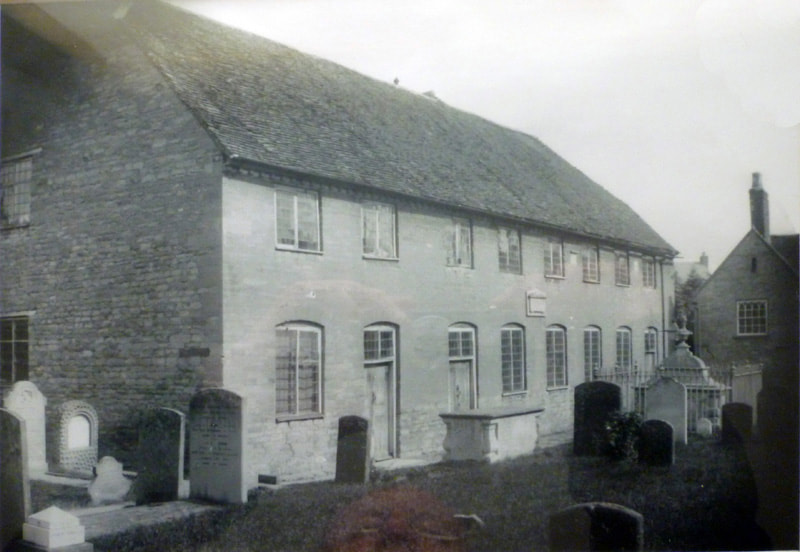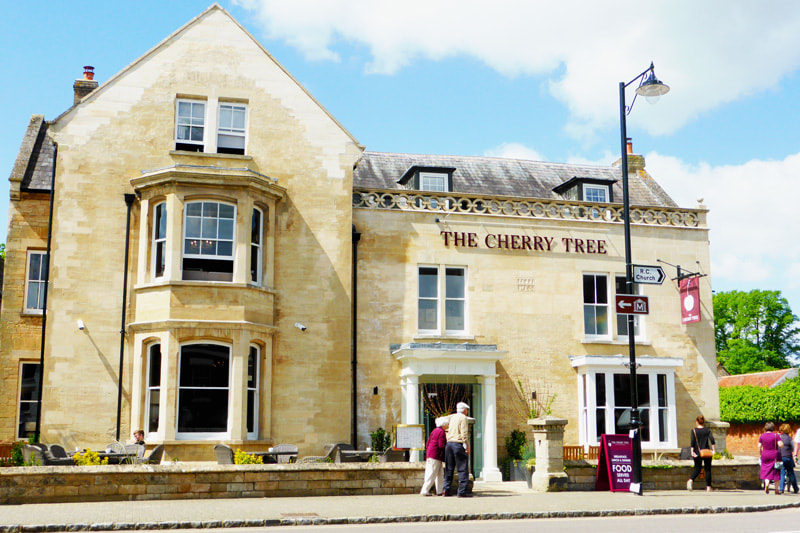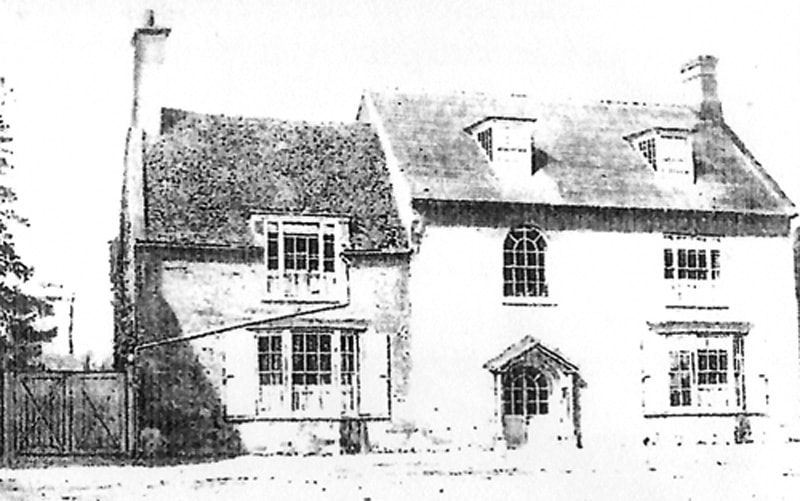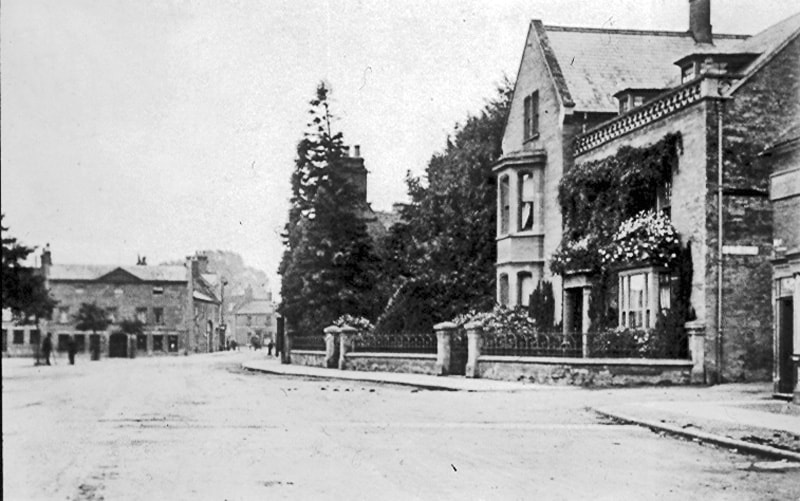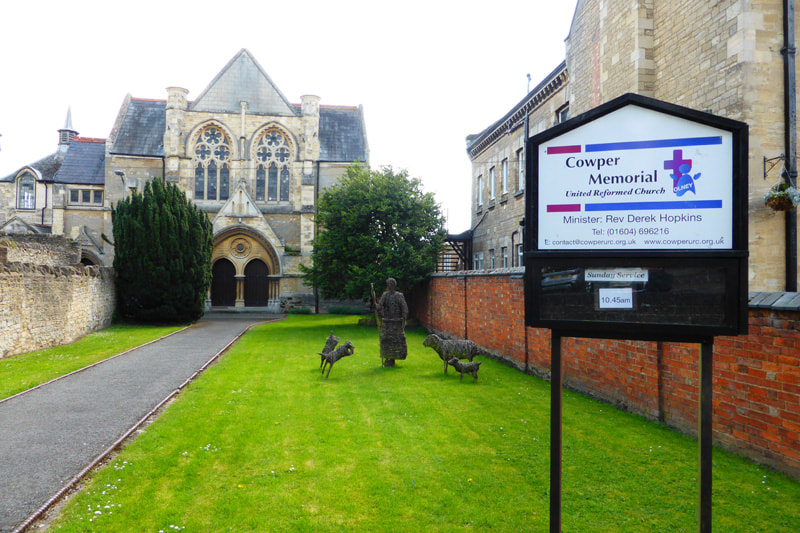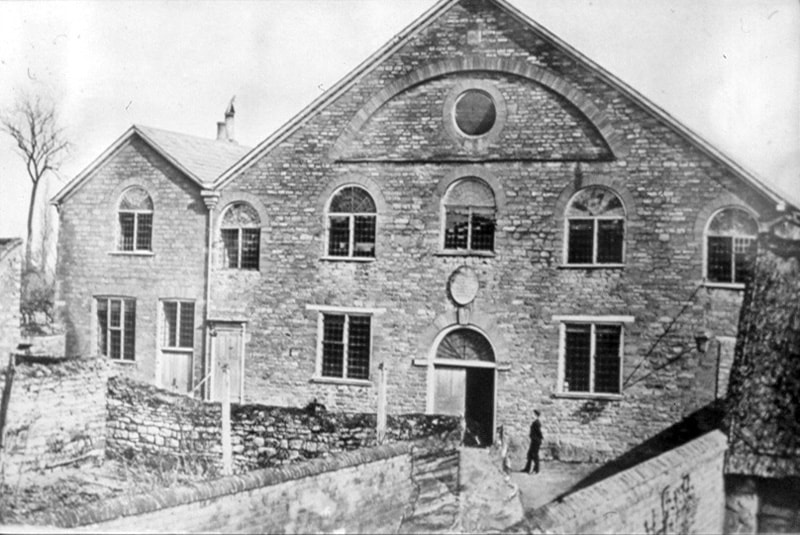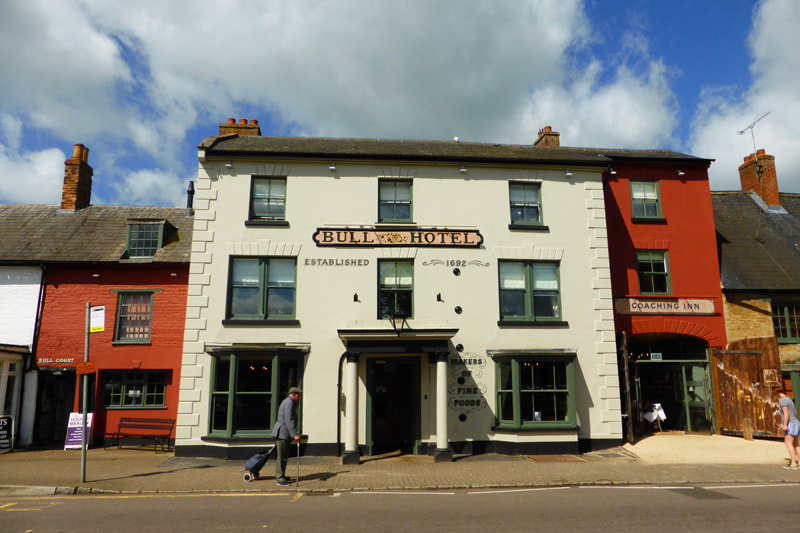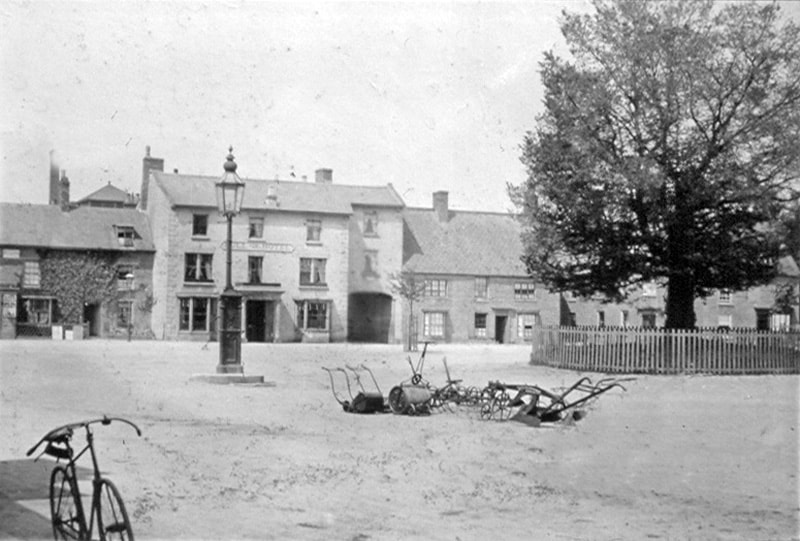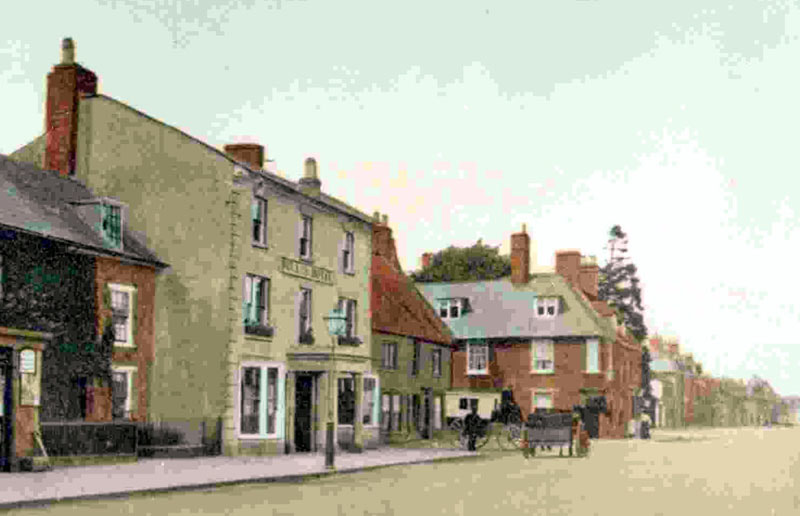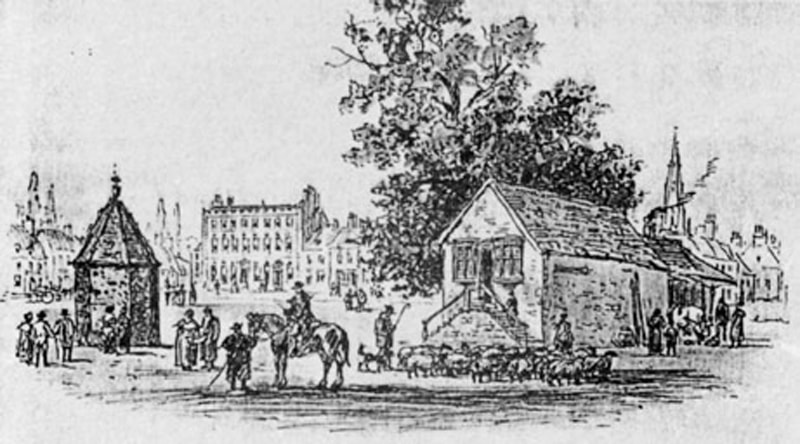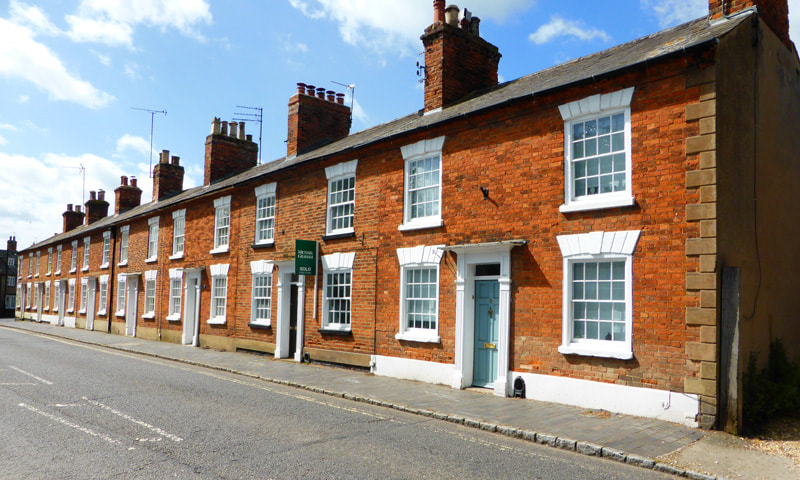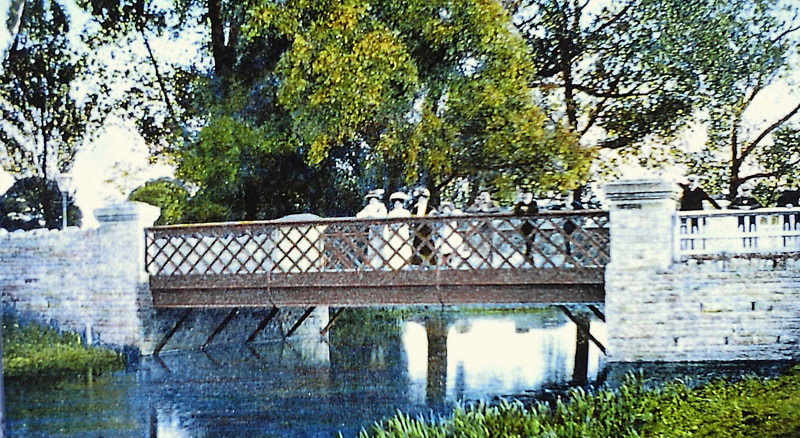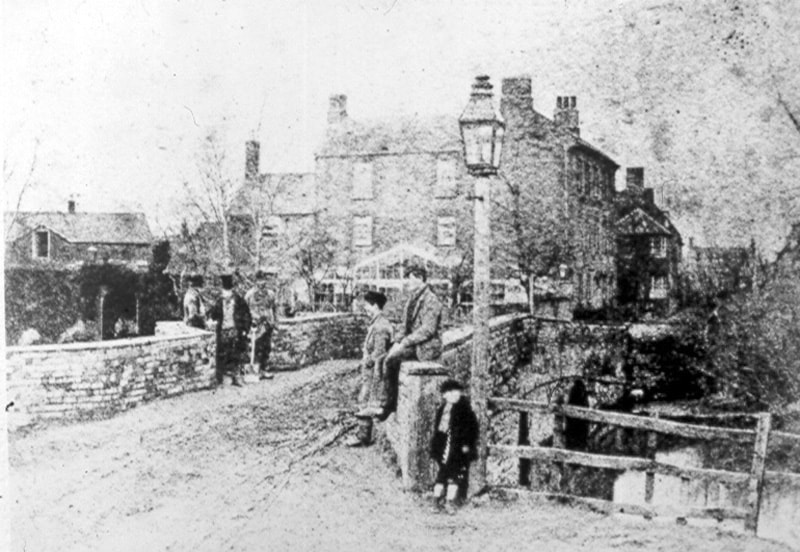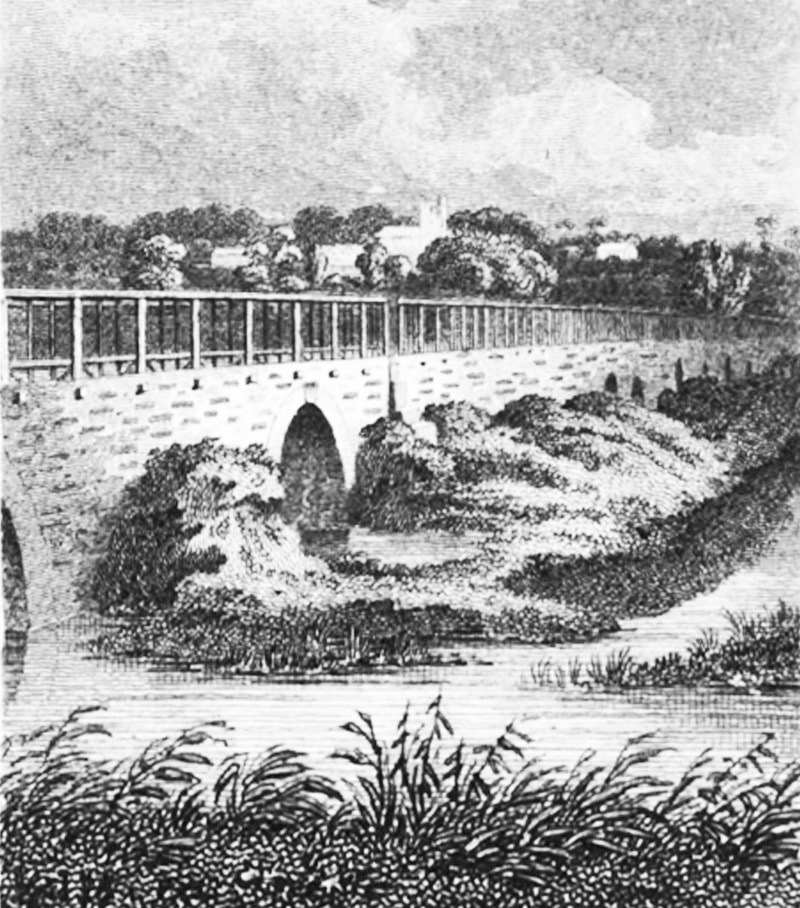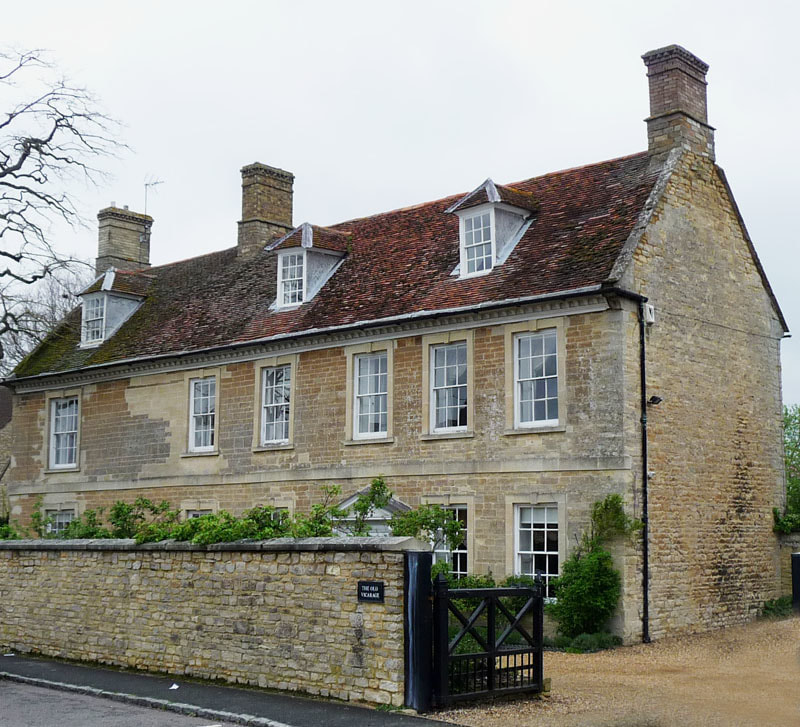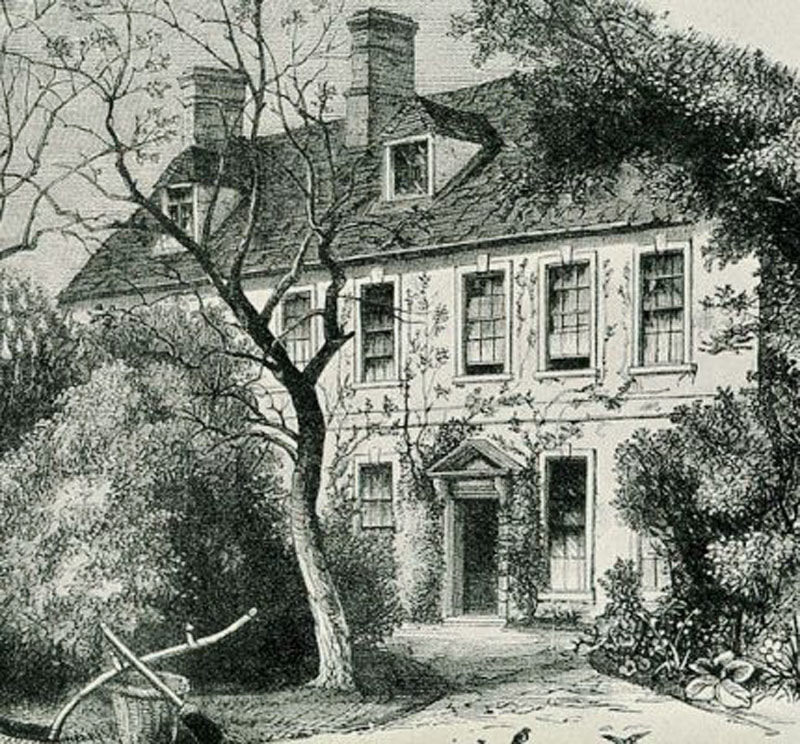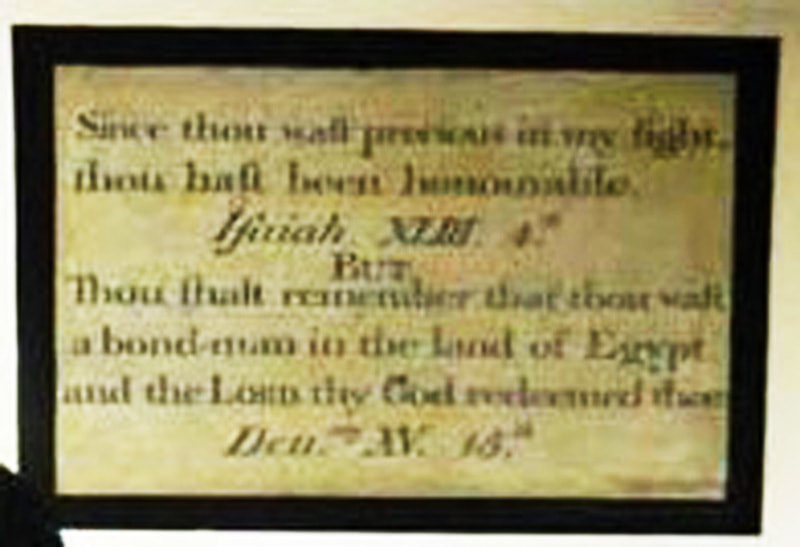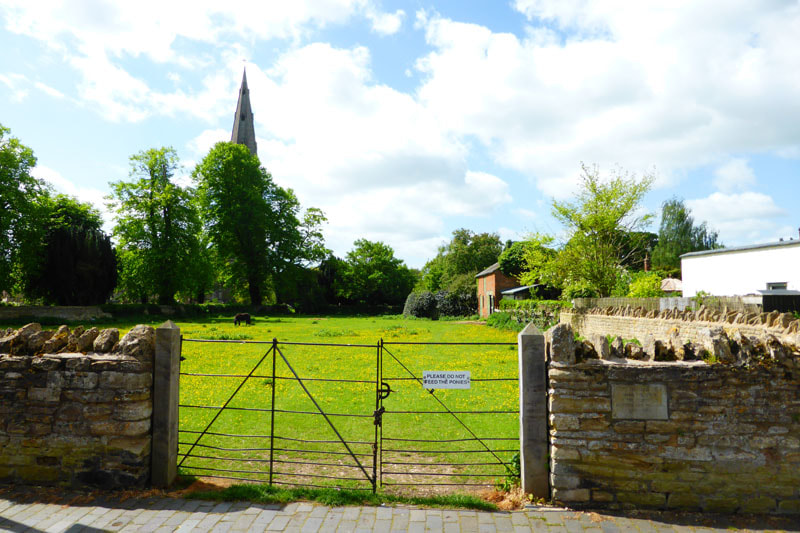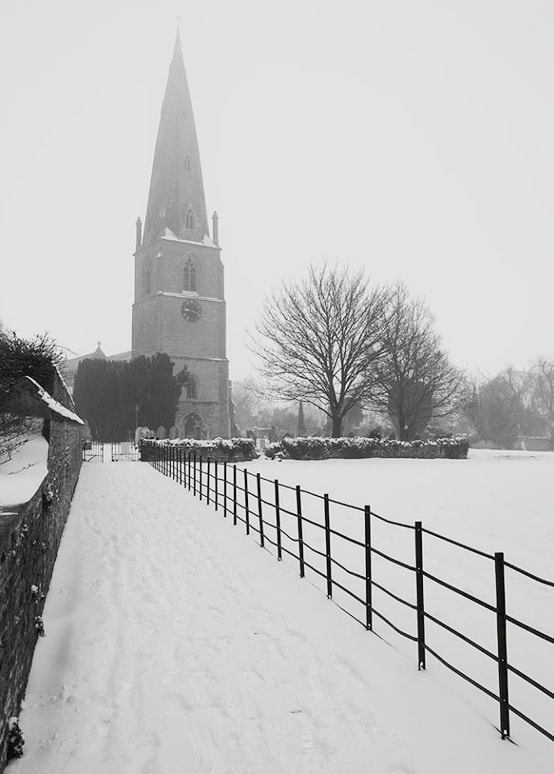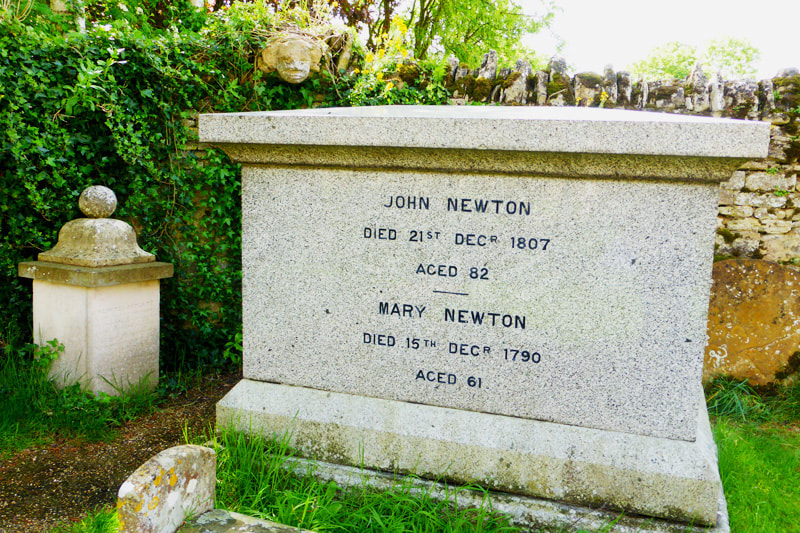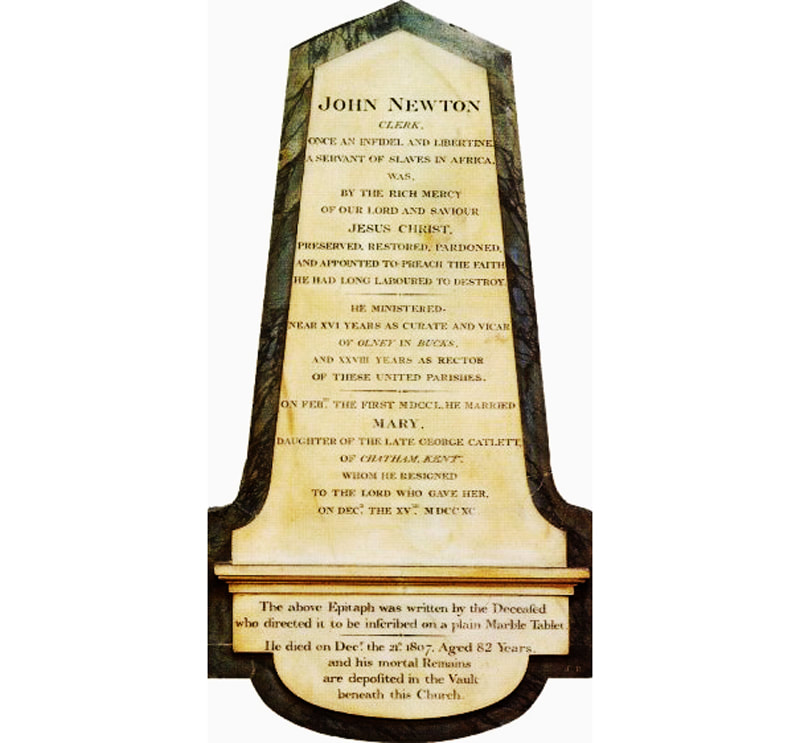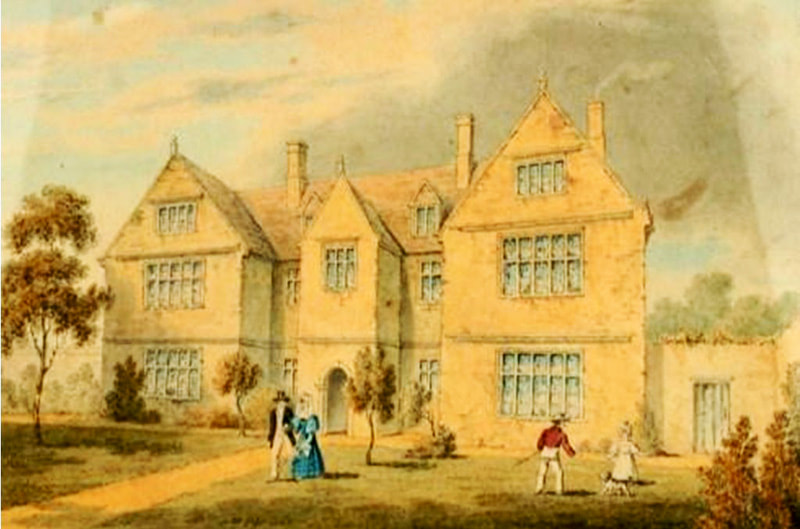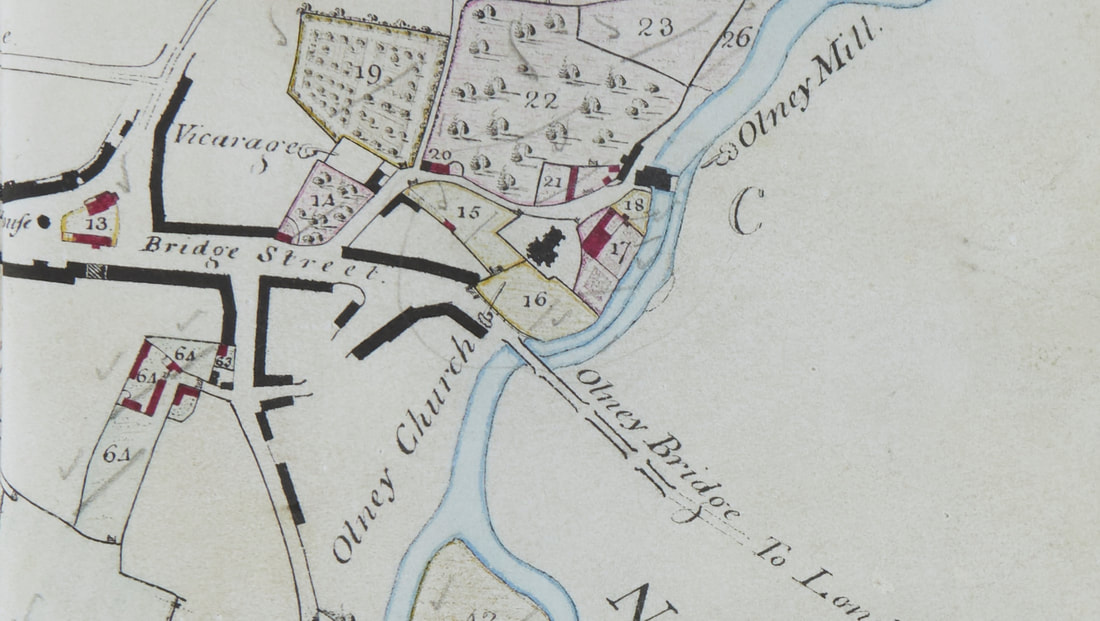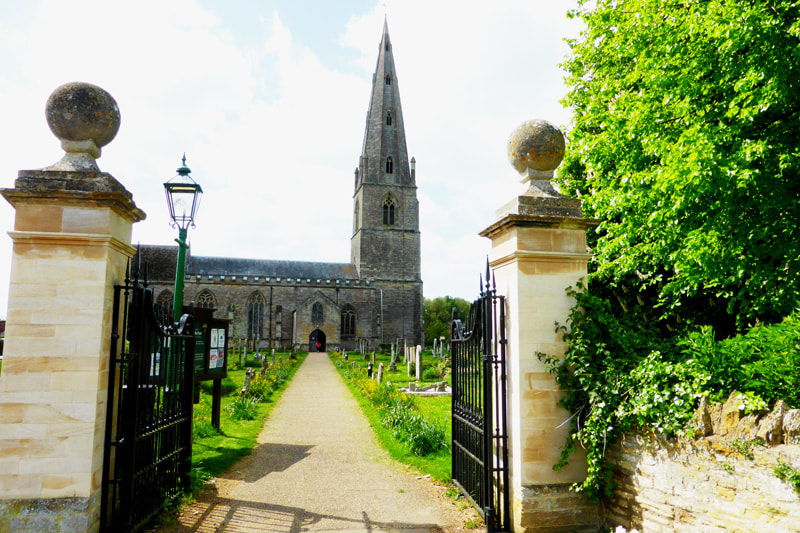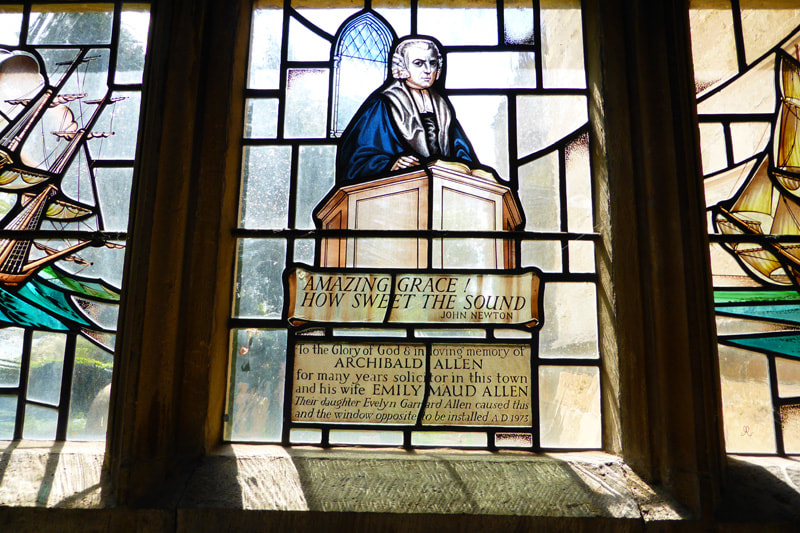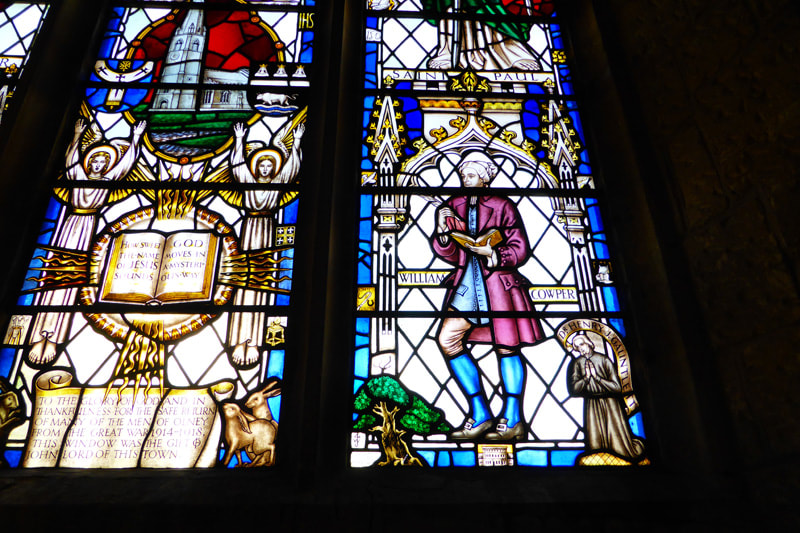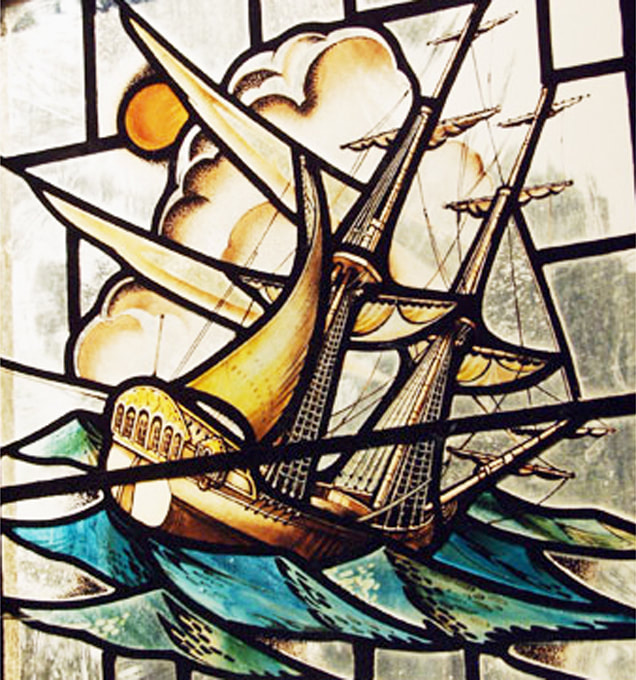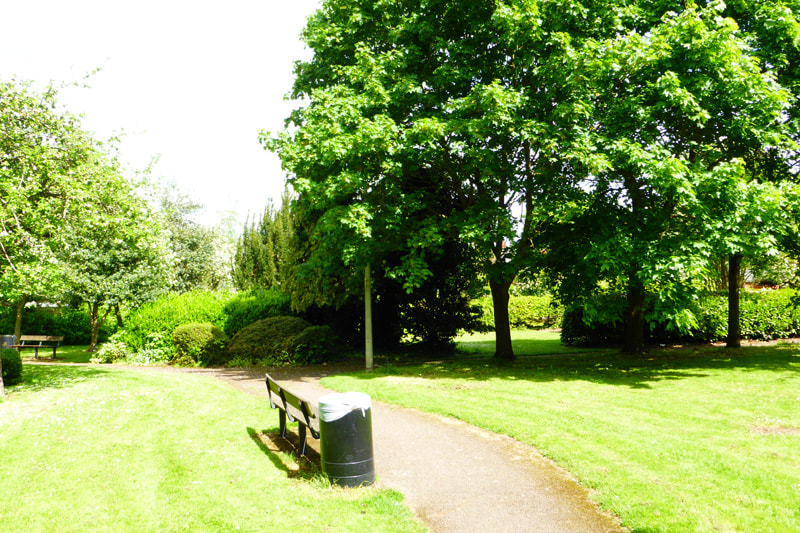John Newton’s Olney
TRAIL SUMMARY:
In 1764 ‘After many dangers, toils and snares’, John Newton was finally ordained & arrived in Olney wondering if he was truly up to the job of Curate in charge of St Peter & St Paul’s. In 1767, widow Mary Unwin also brought her household here, which included her boarder William Cowper.
ADDITIONAL INFO:
Walk in the footsteps of John Newton, celebrating the friendships which flourished & led to the writing & publication in 1779 of the ‘Olney Hymns’. The most famous hymn today is ‘Faith’s Review & Expectation’… or as we know it - ‘Amazing Grace’.
Duration: approx 1 hour Tour distance: approx 1.6km or 1 mile.
In 1764 ‘After many dangers, toils and snares’, John Newton was finally ordained & arrived in Olney wondering if he was truly up to the job of Curate in charge of St Peter & St Paul’s. In 1767, widow Mary Unwin also brought her household here, which included her boarder William Cowper.
ADDITIONAL INFO:
Walk in the footsteps of John Newton, celebrating the friendships which flourished & led to the writing & publication in 1779 of the ‘Olney Hymns’. The most famous hymn today is ‘Faith’s Review & Expectation’… or as we know it - ‘Amazing Grace’.
Duration: approx 1 hour Tour distance: approx 1.6km or 1 mile.
|
1. The Cowper & Newton Museum
Direction: 52.152738, -0.701035 PLACE: 52.152620, -0.700984 ‘Orchard Side’ was the home of Mary Unwin & William Cowper from 1768 – 1786 and is now the Cowper & Newton Museum. Looking at the front of the building you can spot the brick façade added around c1700 which ties 2 older properties together to create a more imposing home. From his parlour & bedroom windows, Cowper could watch events in the Market Place. In fact a Market Place menagerie also inspired John Newton to compose a hymn about a lion. (Olney Hymns Book 1 Hymn 24 - Sampson's Lion) Mary & William had arrived in Olney in 1767 and lived with John & Mary (known as Polly) Newton until this house had been repaired and was ready for them to move in. In 1786 they moved to the nearby village of Weston Underwood. Start your walk across the road from the Cowper & Newton Museum. Stand on the pavement with your back to Market Place and the flower bed to your left. After finding out about the Museum move a little way to your right to look at the row of shops to the right of the Museum. |
|
2. Trades & Ministry
Direction: 52.152711, -0.701416 Place: 52.152605, -0.701341 In the middle of the row of buildings (now Costa) is the house & workshop of Ebenezer Abrahams who was once an important clockmaker. His wife worked with John Newton as he went about his business in the parish, so much so that he said: ‘I feel as if I have lost a right hand’when she died in 1774. The image above is from before c1900 and shows more nearly the look of this row of shops & homes in the late 1700s. After eight years in Liverpool, Olney must have been a great contrast for Newton. However, within months of his arrival in 1764, he had become a celebrity with the publication of his book ‘An Authentic Narrative’. This became a best-seller with 5 editions within the first 6 months of its publication and published in many languages. People were enthralled by the stories of his childhood, life at sea, his struggles with his faith, love for his wife and his journey back to his faith. Follow the perimeter pavement around Market Place past the flowerbed then left again keeping the row of shops to your right and towards the War memorial at the top of Market Place. Close by used to stand the Round House which was the local lock up. You will see 18th century buildings to your right which have traded as shops such as drapers & butchers for centuries. |
|
|
3. The Round House
Direction: 52.153298, -0.701708 Place: 52.152605, -0.701341 Where the War Memorial now stands used to be the ‘Round House’. This was a ‘Lock Up’ housing suspected criminals before they were sent to court in nearby Newport Pagnell. We wonder if any of the ‘wild and lawless mob’ that threatened the Vicarage after John Newton had preached about not putting candles in windows for 5thNovember spent time here? Olney suffered from many fires in the 18th& 19thcenturies. John used the town’s experience of a fire to write a hymn for his congregation. Hymn 68 is titled ‘On the Fire at Olney , September 22nd1777’ ‘The shout of fire! a dreadful cry, Impressed each heart with deep dismay; (By the way – Hymn 67 is about an earthquake felt in Olney on 8thSeptember 1775) Walk towards High Street and look across the road to the Olney Baptist Church. |
|
4. Olney Baptist Church & John Sutcliff
Direction: 52.153262, -0.701920 Place: 52.153290, -0.702046 The Baptist Church began as the ‘Barn of John Kent’ which became a licensed meeting place in the 1670s and has been through several transformations including a total rebuild in 1893. In JohnNewton’s day a shop and house lay to the front. In 1775 John Sutcliff had settled in Olney, subsequently to become Pastor for thirty-nine years. John Newton was actually present at his ordination and described the service. The Association of Baptist Ministers also met in Olney. Sutcliff also lived and set up an academy or seminary in two adjacent houses further along the street to the right. Under his tutelage a number of prominent Baptist preachers developed, including William Carey who was instrumental in the formation of the Baptist Missionary Society in 1792 and became its first missionary in 1793. Walk to your right towards a small seating area. From here you have a good view across the road of John Sutcliff’s lodgings |
|
|
5. John Sutcliff’s Lodgings
Direction: 52.153428, -0.701923 Place: 52.153445, -0.702000 The large house now The Cherry Tree was the Rev John Sutcliff’s lodging before getting married. His ‘digs’ were handy to walk from the garden, and through a door straight to his pulpit in the Baptist Chapel next door. John Newton would have been a regular visitor to the house and its owners – Mr and Mrs Andrews. Look out for the date stone on the front of the building. A short walk along High Street and past some of Olney’s old houses and independent shops brings you to the Cowper Memorial United Reformed Church. Your walk then returns to Market Place. Otherwise miss out this point and skip to No 7 The Bull |
|
|
6. Cowper Memorial United Reformed Church
Direction: 52.155332, -0.701378 Place: 52.155283, -0.701185 The United Reformed Church is set-back from the pavement and covers the site of the old Independent Chapel built in 1762. That long-lost Chapel is where John Newton gave some of his ‘New Year Sermons for Young People’ and was part of the close friendships and partnerships between the faiths in Olney at that time. ‘I should be glad if the Partition Wall between Christians of different Denominations would every where fall down flat as it has done at Olney.’ William Cowper June 1768 The building we see today arrived in 1880 but the photograph shows the earlier 18thcentury building and before the houses to the front were purchased and demolished. You can see the remains of the demolished house on the cottage wall above the passageway. If you have the opportunity to look inside, you will meet our Clockmaker, Ebeneezer Abrahams once again. Retrace your footsteps back to the Market Place. Stop by the Pancake Race Runner flower bed to have a good view of The Bull |
|
|
7. The Bull & The Bear
Direction: 52.152892, -0.701802 Place: 52.152892, -0.702070 The Bull is an old coaching house (larger building to the left) which gave William Cowper and Mrs Unwin a bed during 1771. Their motives were entirely innocent, though. One of the servants at Orchard Side had developed Smallpox and they had to avoid infection. 'How can you bear to be amongst Bulls and Bears?'John wrote, referring to the former name of the adjoining common alehouse, the Dog and Bear. Bear Lane and the original entrance to the Baptist Chapel lies to the right. Beer for the Inn and the rest of the town was brewed in a building to the rear, now the carpark. Make your way towards the bus shelter which was the location of the Shiel Hall |
|
|
8. The Shiel Hall
Direction: 52.152892, -0.701802 Place: 52.152851, -0.701829 The Shiel Hall was taken down in 1816 but originally stood on Market Place where the public toilets are now located. It had many uses in its time including being the Town Hall but in 1775 John Newton persuaded Samuel Teedon to relocate from Bedford to run a school from here to teach the sons of Olney’s tradespeople to ‘read and write and cast accounts’. A water pump was also erected in the Market Place for everyone to use. It had a light put on the top to stop people bumping into it in the dark! William wrote to John about this in 1782 and included a short verse: ‘Daniel Raban (baker) has levelled and gravelled the Market Hill, and because water is scarce at Olney, has put the parish to the expense of a town pump, and designs, in order that people may not run their heads against it in the night, to crown it with a lamp. As the people here are not so rich as to be able to afford superfluities, this measure does not give universal satisfaction. I subjoin the only verses I have written for some time, which, however, are not to be published. The pump stands opposite Banister’s door.’ Let Banister now lend his aid to furnish shoes for the Baker, Who has put down a pump, with a lamp on its head, For the use of the said Shoe-maker.’ Continue your journey past the Bus Stop, over Market Street and past establishments which have been homes and places of business for ‘Olneyites’ for centuries until you reach the Church Hall (formally the 19th century Church School). Across the road is a uniform row of Victorian houses which were built on the site of the Poor House & Work House. It had been sold in 1838 as part of the ‘centralisation’ in the area under the Newport Pagnell Poor Law Union |
|
9. Location of Poor House
Direction: 52.151488, -0.701668 Place: 52.151380, -0.701885 This was the site of the Poor House & Work House in the 1700s and would have been a place John Newton knew well. One commentator described many of the people of Olney as ‘half-starved and ragged’. There is no image of the Poor House & Work House but we have a written description from 1724 about the ‘care for the poor’. ‘The poor of the House have hot meat twice a week, they are allowed cheese, their bread is two parts wheat to one of barley; and for their small beer two bushels are allowed to the hogshead.’ ‘That if any person refuse to work orderly, and so many hours as the Master of the House shall command them, they shall be sent to the House of correction. That if any person will not work, pretending to be sick, which may be discovered by their stomachs or otherwise, they shall be severely punished. That the Poor people in the Workhouse, if of healthful bodies, and able shall in Summer rise at 5 or before that time, and go to bed at 9.’ Continue your walk towardsOlney Bridge crossing over Church Street. You will also see the entrance to Emberton Country Park across the road. |
|
10. Olney Bridge
Direction: 52.150251, -0.702446 Place: 52.149863, -0.702661 At Olney Bridge stand a while to enjoy the views in all directions - if not the increase in traffic since the 1700s … ‘Hark! ’tis the twanging horn! o’er yonder bridge,’ William Cowper The Task The river was often in flood before water management controls were put in place and the bridge often damaged or broken down. This meant that Olney was often cut off for what could be months on end. The bridge was also a point of disagreement between the resident of Olney and the nearby village of Emberton over who was responsible for paying for the repair and upkeep. In fact the argument ended up in Court and it was judged that Olney should bear all the costs… The bridge was also the site of a Civil War battle in 1643. Parliament held Newport Pagnell, and Olney was one of its outposts. Prince Rupert held Northampton for the King and marched on Olney intending to continue on to Newport. The Olney forces were taken by surprise and the Parliamentarians retreated to the bridge where they made a defiant stand. The Royalists could have won decisively, had it not been for a rumour that Cromwell’s reinforcements were seen coming from Newport. The Royalists retreated and the battle was over. Return towards Olney and turn into Church Street on your right. Continuing with the Glebe land (a grazing field surrounded by buildings and a stone wall) to your right, you will soon catch sight of the church of St Peter & St Paul. John Newton’s Vicarageis across the road to your left |
|
11. Newton’s Heart & Soul - The Old Vicarage & Glebe land
Direction: 52.151072, -0.700817 Place: 52.151168, -0.700809 John Newton’s former home, ‘The Old Vicarage’ has a direct view across to his Church. It was virtually rebuilt for Newton in 1767 by his patron Lord Dartmouth. Despite its size, Newton operated an open-house policy at his vicarage for people who travelled for miles to hear him preach, inviting them for supper after evening services. He had to start issuing tickets when his suppers becametoopopular. We wonder what his wife Polly thought about this! This house is in private ownership, but two biblical texts which John Newton had painted on the wall of his study survive inside the house to this day. In a letter to Lord Darmouth John explained that he had chosen these words to be a reminder ‘from day to day what I was, and by what means I am now undeservedly settled in the Vicarage at Olney.‘ They were positioned to ensure he never forgot how different his life was in 1767 from his life back in 1746. In that year, whilst in the land-based slave trade himself, he had become ill, was starved and finally locked to the deck of his master’s boat. Walk a little further towards the Church gateway . Turning towards the Glebe land you will have a view of John Newton’s home to your right and his church to your left. Sitting in his attic study John will have looked out over the Glebe land to the church when he wrote his hymn Amazing Grace |
|
|
12. Amazing Grace
Direction: 52.150887, -0.700538 Place: 52.150783, -0.700702 John Newton did much of his sermon writing in his attic study. It is highly likely that ‘Faith’s Review and Expectation’ (Amazing Grace’) was written by him in the weeks leading up to his New Year’s Day service on 1st January 1773. When William Cowper arrived to live in Olney in 1767 a friendship had grown quickly between the 2 households and both William & John began writing new hymns for the local congregation to sing at friendship groups in houses and the Vicarage, as well as in Church. In 1779 the hymns were collected together and published by John in a hymn book titled ‘The Olney Hymns’. All 348 hymns in the hymn book were written by William Cowper or John Newton. John had hoped that William would have written the majority but a severe depression in 1773 brought an end to his hymn writing. From the last verse of ‘Amazing Grace’ ‘The earth shall soon dissolve like snow, The sun forbear to shine; But God, who call’d me here below, Will be for ever mine.’ Make your way into the church yard but before going into the church, follow either path around to the rear of the church yard where you will find John Newton’s tomb. |
|
14. The Great House
Direction: 52.149817, -0.701247 Place: 52.149741, -0.701513 Near this spot stood Lord Dartmouth’s unused ‘Great House’. Here John Newton held weekly meetings for adults & children. Mary Unwin, friend of William Cowper, ‘used her tuneful voice’ and played the harpsichord to lead the singing of hymns at the children’s meetings. To celebrate the moving of one of the meetings into a larger room within the house, Newton & Cowper each composed a special commemorative hymn. Cowper’s hymn is the better know today ‘ Jesus! where’er Thy people meet’ The Great House was demolished in the 19thcentury and a private house is built on the site. However, parts of the building were re-used around the town & you will have passed the stone balls from the gate to The Great House on the pillars of the church gateway. Make your way into the Church of St Peter & St Paul but please be aware for any services which may be being held. |
|
|
15. The Church of St Peter & St Paul
Direction: 52.150025, -0.700861 Place: 52.149846, -0.700934 Most of the church architecture and furniture dates from the 14thcentury with repairs & renovations from the 19thcentury. John Newton was curate in charge of the church from 1764 to 1780 when he moved as Vicar to the church of St Mary Woolnoth in London. During his services John preferred to preach extempore – without referring to notes – but he carefully prepared his message beforehand in a sermon notebook. His reputation soon spread and people came from far and wide to hear him preach. A new gallery was built so everyone who came to hear him could fit inside. Newton’s Gallery and William Cowper’s seat within it survived until 1904. You will also find within the Lady Chapel 2 stained glass windows which show the milestones in the lives of Cowper and Newton. In the Chancel is another window which illustrates John’s life. The ship is the ‘Greyhound’. The verses of ‘Amazing Grace’ tell of John’s own personal history as a recalcitrant young sailor in the shipping trade, Navy and transatlantic slave trade. They also remind us of a day that John never forgot throughout his life when aboard the badly stormed-damaged ‘Greyhound’ and fearing for his life he began his journey back to his faith: In the south-western corner is a pulpit which was found in Northampton’s old prison. It is said by some to have been Newton’s pulpit, although no one really knows for sure. Here you will also find the brass plate from Newton’s coffin. Thomas Scott (1747-1821) who also vicar here till 1785 - he is best known for his commentary on the Bible which was admired by William Wilberforce. Henry John Gauntlett (1805-1876), the celebrated organ designer, organist, and composer began his career aged nine as his father's organist at Olney. His most famous tune today is the tune to which “Once in Royal David’s City” is usually sung. If you would like more information about the church, you are able to buy a short guide. Could we also encourage you to consider making a small donation towards the up keep of this wonderful building and its work. Now retrace your route back long Church Street and find an alley way to the main road side of the Vicarage. Take this route through to a small public park area called The Guinea Orchard |
|
16. Guinea Orchard
Directions: 52.151165, -0.701095 Place: 52.151677, -0.700756 The Guinea Orchard sits between the gardens of William Cowper’s house and John Newton’s Vicarage. It’s called the Guinea Orchard because Cowper & Newton paid its owner one pound and one shilling (known as a Guinea) for permission to cross it when they wanted to meet. This meant that they didn’t have to go the long way around and use the road. ‘I believe … we were not seven hours without being together.’ Newton would have used the route many times during January 1773 to shuttle back and forth from his Vicarage to check on the condition of Cowper who was suffering one of his most serious episodes of what we would now recognize as clinical depression. With care and attention from Mary Unwin, John & Polly Newton, William slowly recovered from his severe depression and resumed a more active life in Olney. You can find out more about his life in our other walk. Not long after John’s arrival in Olney he began to receive offers of other posts elsewhere. In 1780 he finally accepted the post of Vicar at St Mary Woolnoth, London although he kept his contact with Olney through visits and letters to friends for many years. ‘Oh how I long sometimes to spend a day or two among woods and lawns and brooks and hedgerows, to hear the birds sing in the bushes and to wander among the sheep and the lambs or to stand under the shadow of an old oak upon a hilltop. Thus I lived in Olney. How different is London! But hush! Olney was a place once. London is the place now. Hither the Lord has brought me …. I am satisfied.’ To return to Market Place take the right hand path through the Lychgate beside the Pegasus Manor House, and then turn left again. Or take the left hand path and take one of the alleyways through to the High Street or Market Place. |
